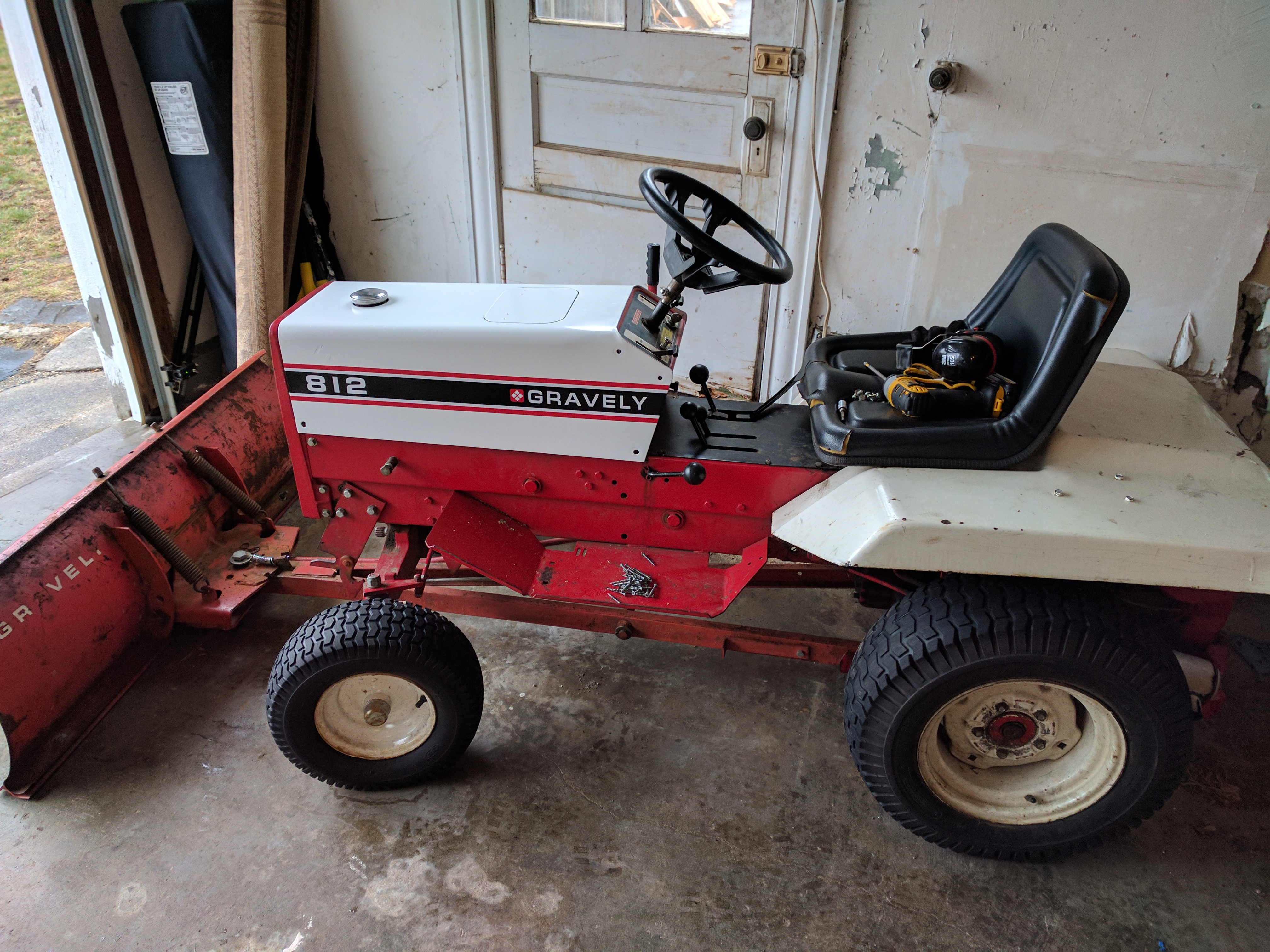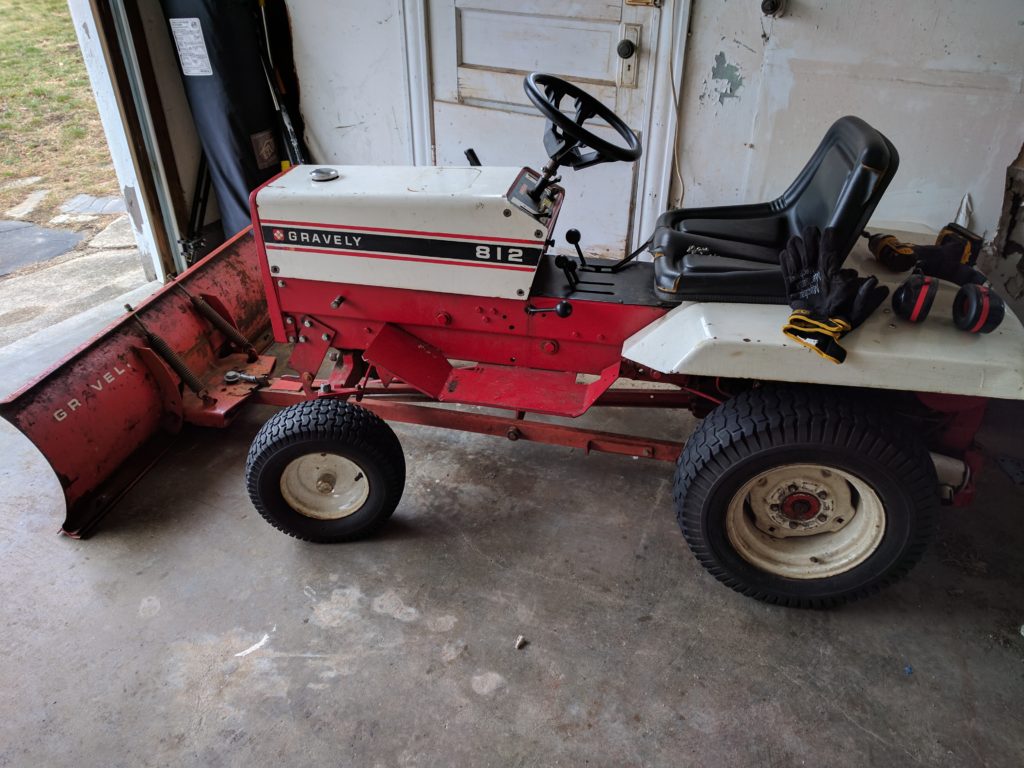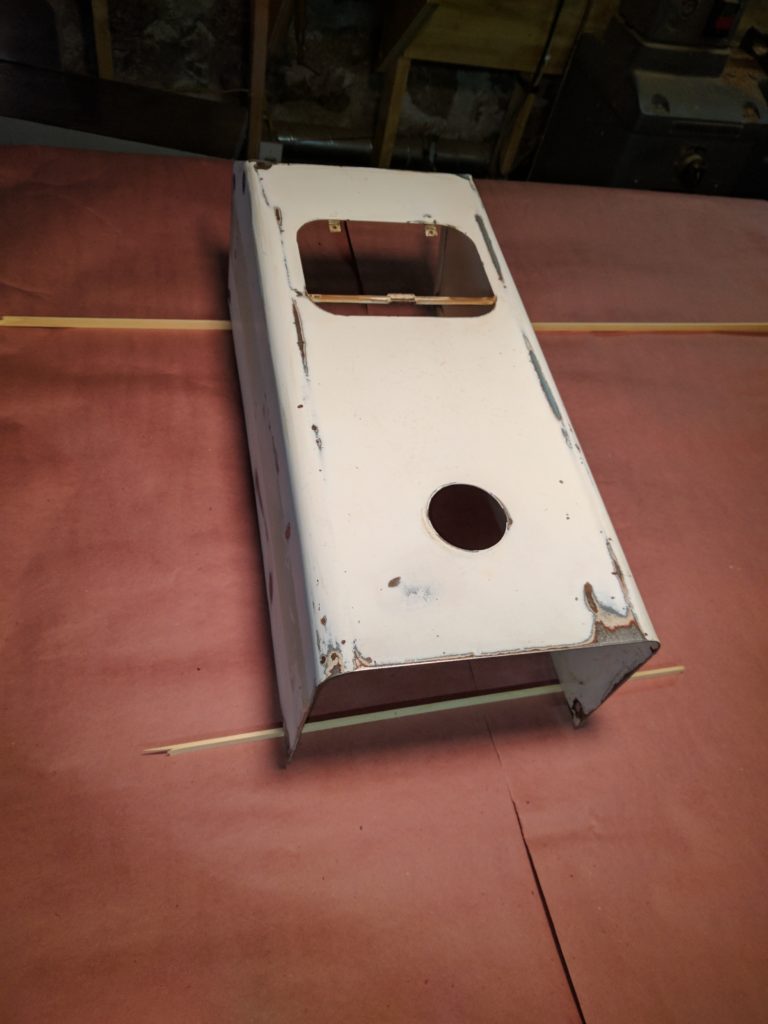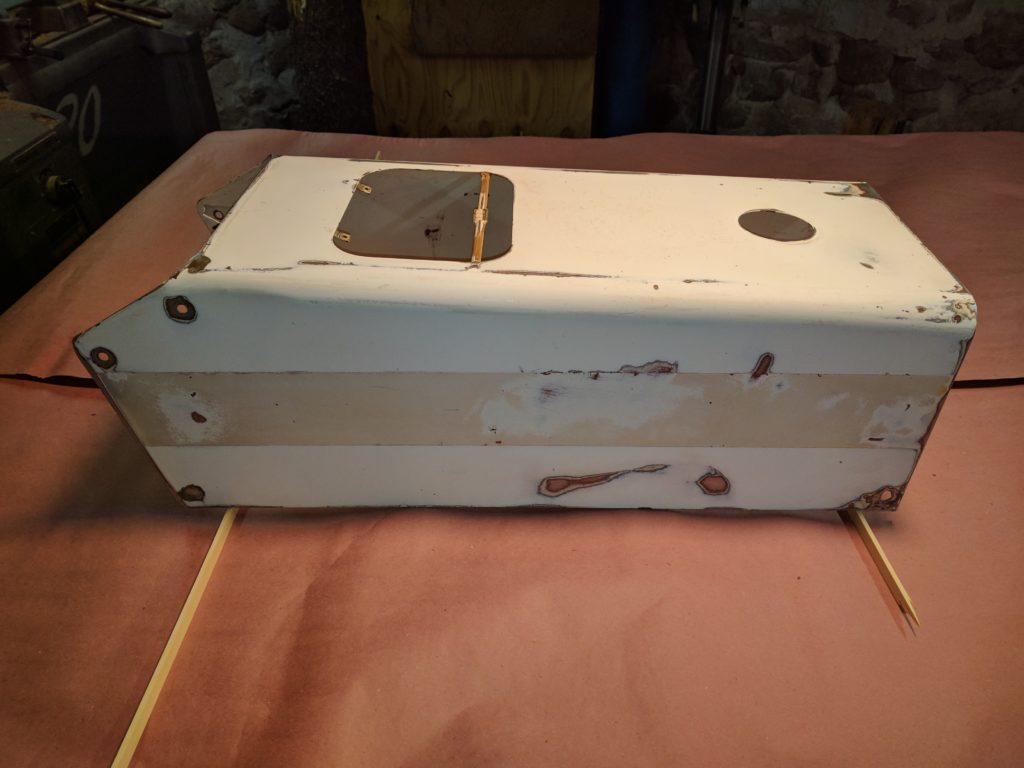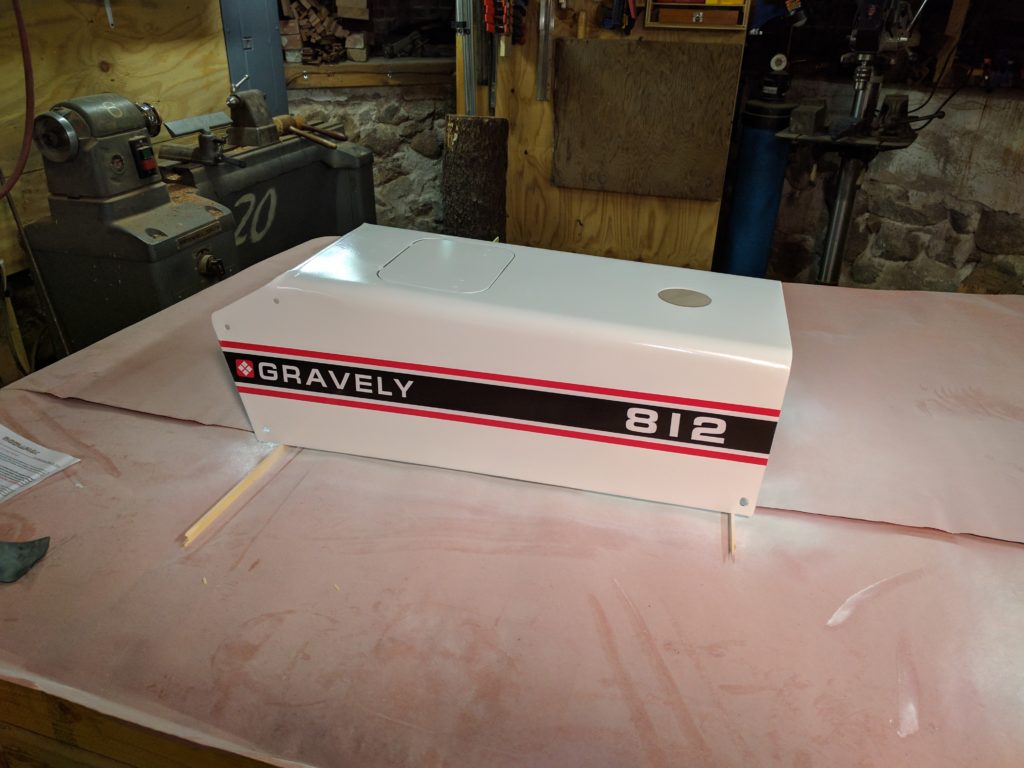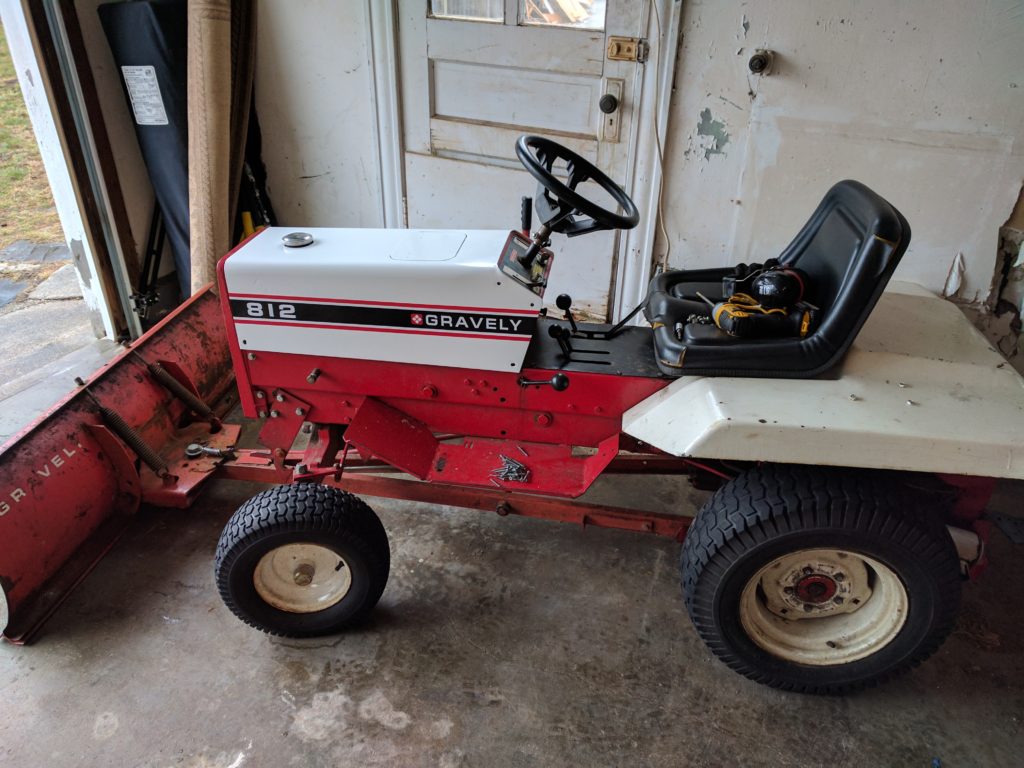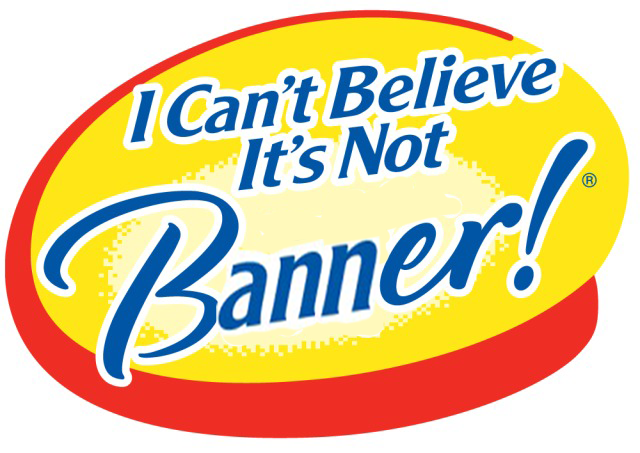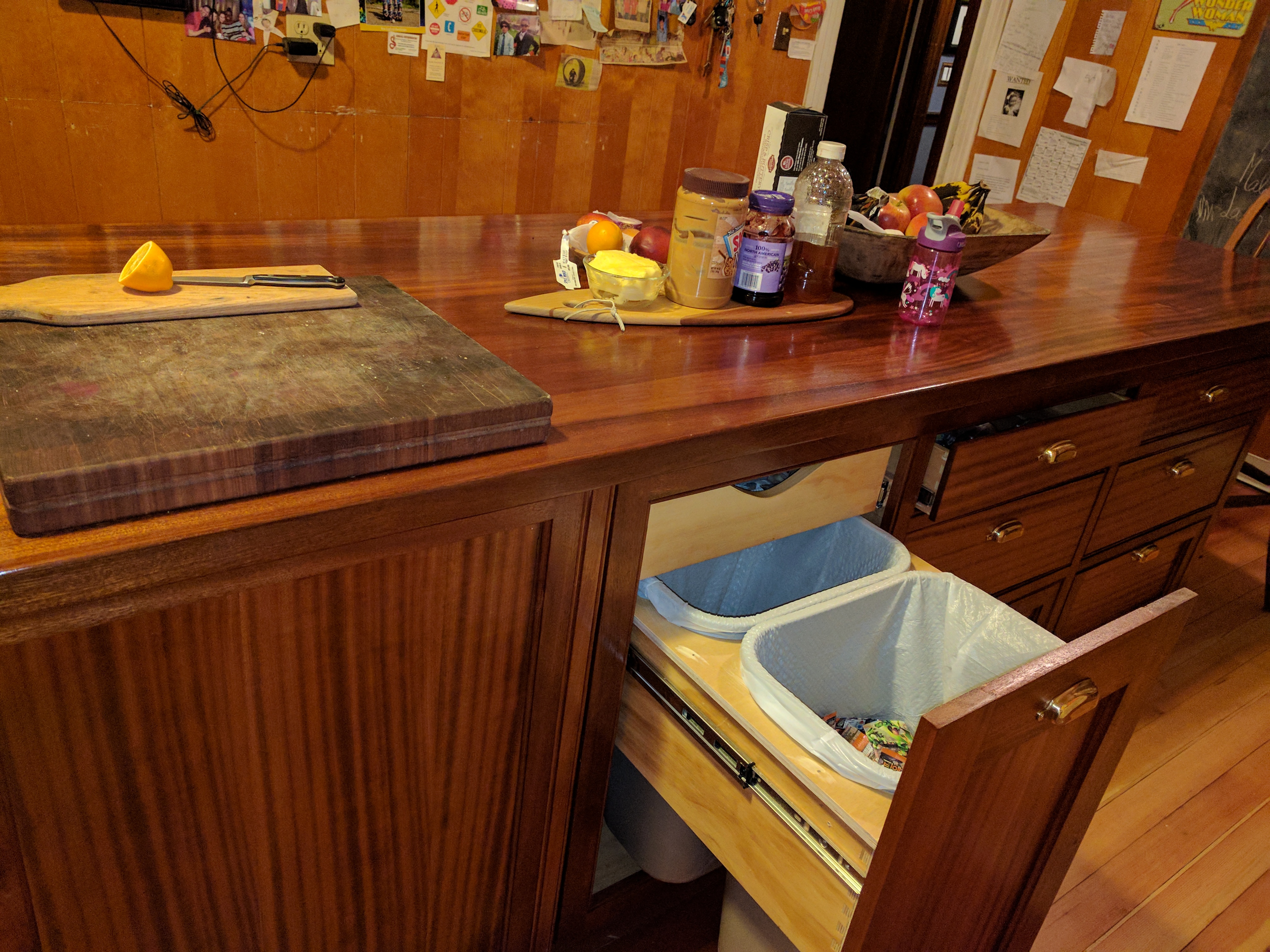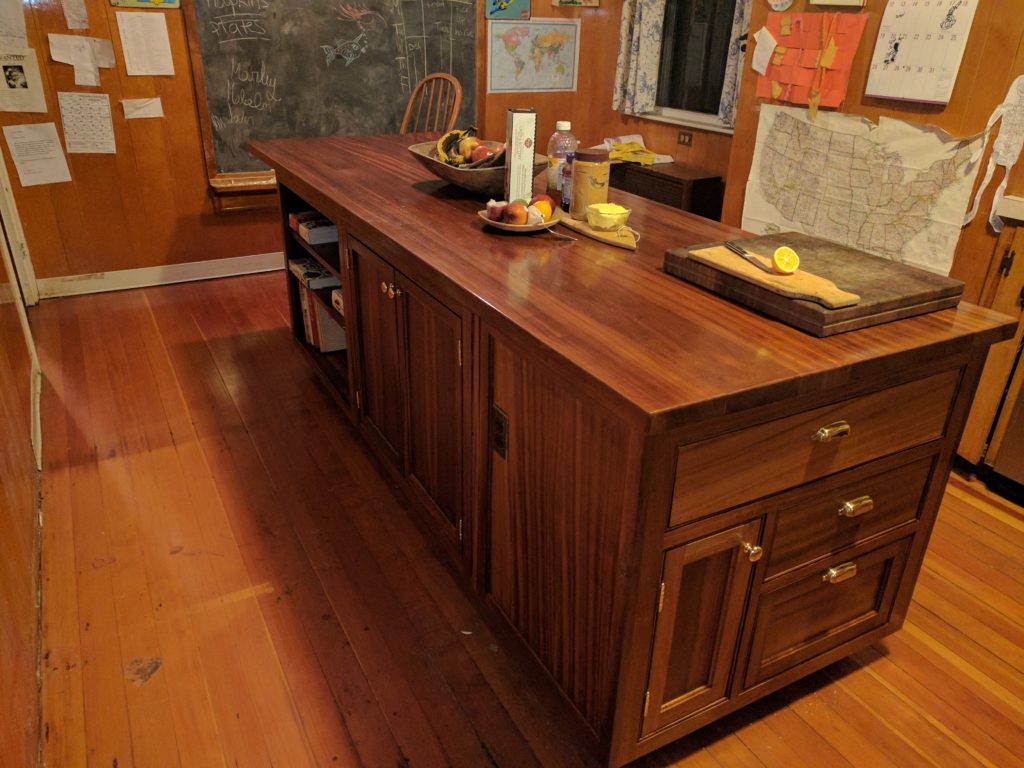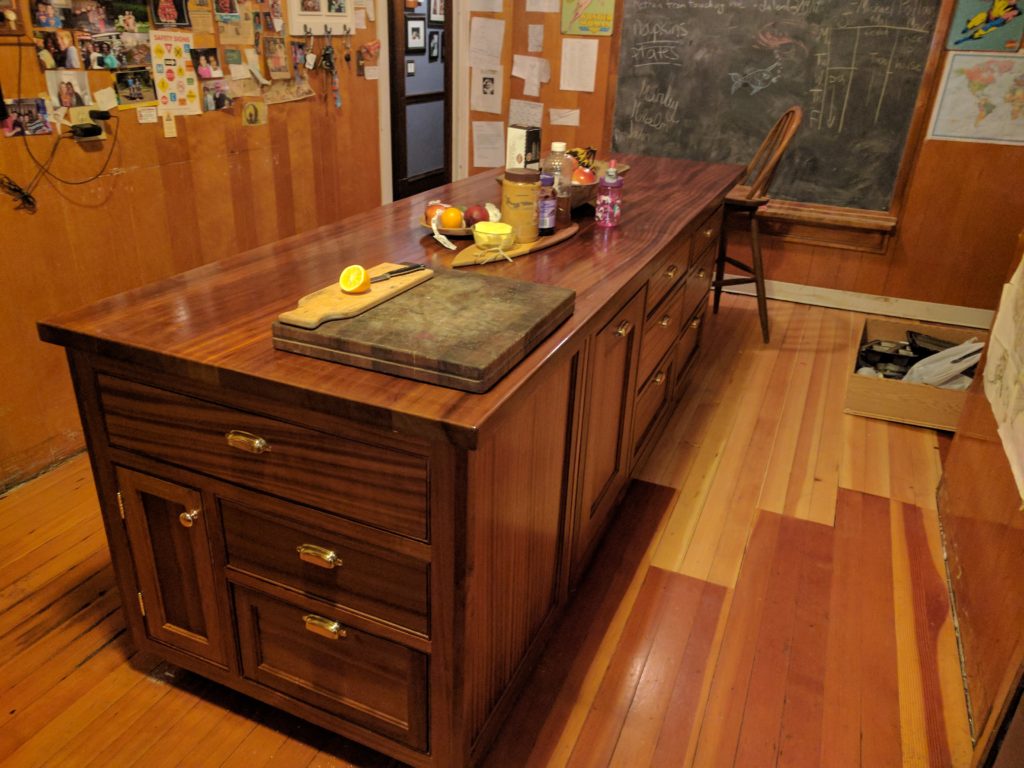I’ve had a Gravely 812 for around 10 years now and I like her a lot. She is as old as me, built in 1973. She’s a brickhouse and even has a cigar lighter in the dash. She’s really jumpy when put in gear but there’s a few things about her that I really like:
- PTO: it stands for power take-off and it’s really cool. All old tractors have it – it’s a spinning shaft that you can connect to various attachments; snowblower, wood chipper, mower deck, tiller, brush hog, etc.
- Hydraulics: this 812 comes equipped with hydraulic lift. It’s the premium way to raise or lower the mower deck or snow plow
- Repairable: lots of new tractors are disposable. Not the Gravely 812. She has a Kohler 12 HP motor and parts are readily available.
I sometimes look at old cars and want to restore one. That’s a big job, but getting the gravely into better shape is a much more practical goal in that I already own one and I can restore a neglected part and resume using the tractor. There are limited parts and it really looks good when cleaned up.
Anyway, I took the hood off and cleaned, hammered straight, sanded, removed decals, painted and applied new decals that I ordered online.
